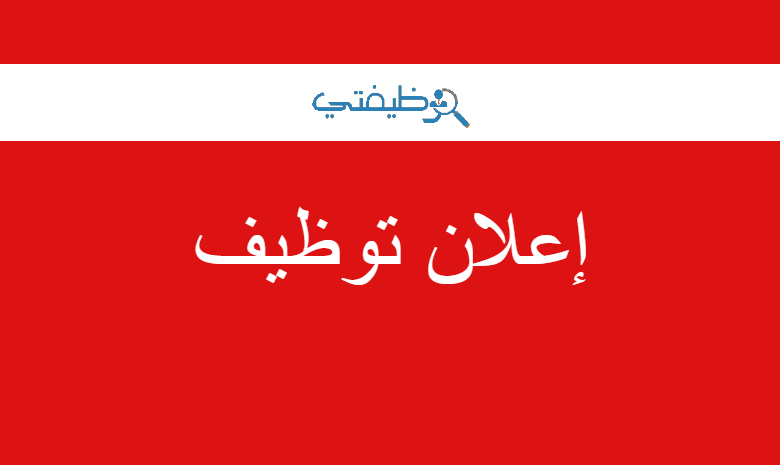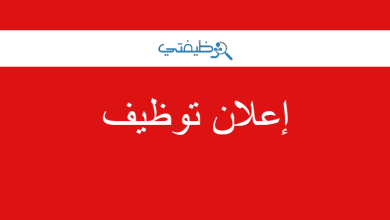POST-EARTHQUAKE ASSESSMENT AND CAPACITY BUILDING

Impact of the earthquake
On the 6th of February 2023 a 7.8 Mw earthquake struck the southern central region of Turkey and Northern Syria. This first earthquake was followed in the coming hours and days by a series of other earthquakes creating devastating consequences for the populations, damaging homes and critical infrastructure like health facilities, schools, etc.
The earthquakes came at a time when Syrian communities have been pushed to the brink as the country marks its twelfth year of conflict on 15 March 2023. For many Syrians, this is their twelfth year of living in displacement, marked by hostilities, poverty, and an uncertain future. The earthquakes only added to the layers of suffering, killing and injuring more than 13,000 people in the north-west alone. During this 12 years of conflict humanitarian needs have continuously climbed and worsened in its severity. From 2021 to 2022, the number of people in need in North-West Syria has jumped by 20 per cent from 3.4 million to 4.1 million people – out of a population of some 4.5 million. While the number remains at a similar level in 2023, the earthquakes have overstretched communities that have endured conflict for over a decade. Some 1.9 million people today continue to live in camps or self-settled sites in dire conditions, often with limited or no access to health services, clean water, or electricity. In the aftermath of the earthquakes, numerous people outside of camps were rendered homeless as more than 10,500 buildings collapsed across the Idleb and northern Aleppo.
Seven cities were reported to have been heavily affected, with a combined population of around 374,514 individuals. However, it is calculated that closer to 148 cities and towns across North-West Syria were impacted, which brings the total number of affected individuals up to 2,968,380. While some of them were directly affected by the loss or injury of a family member due to the earthquake or the destruction of their homes completely or partially, others were indirectly affected because they were forced to move, or their income sources were stopped. It is likely that, given the social and economic circumstances as well as the level of destruction, the inhabitants of these cities may remain for a long time without shelter, direct access to water and sanitation systems and/or electricity.
Objectives and main activities of the consultancy
The main objective of this consultancy is to facilitate and inform SI’s Shelter Rehabilitation response strategic planning from a technical perspective. This will be accomplished by (1) conducting technical assessments on damaged structures and (2) capacitating SI’s team on how to approach rehabilitations with a “build back better” approach. Furthermore, (3) it is expected that in the process of conducting this assessments and capacity building, the outcomes can be shared among the relevant stakeholders (e.g., Shelter Cluster) as well as eventually be translated into a general guidance and/or resources data base that can inform SI’s Shelter Department in future responses of similar characteristics.
Technical Assessment
Given the complex context and the limited access to NWS (specially Idleb governorate), the consultant will work remotely in collaboration with SI’s coordination and field teams, which are composed of qualified engineers currently in charge of carrying out the ongoing small business rehabilitations and who will also be responsible for SI’s future interventions.
The consultant will first have to work with SI’s team to shortlist 5 to 10 critical facilities (the final number will depend on the size of the facilities) where the technical assessments will be carried out. This will be done in coordination with local authorities and the Shelter and Early Recovery and Livelihoods clusters. For this purpose, SI has decided to concentrate as first area of approach in the sub-district of Dana, located in Harim district, Idleb governorate.
The sub-district has a total population of around 80,000, out of which 14,925 have been identified as IDPs, making it one of the top arrival sub-districts in NW SI has been working in this area for several years and right after the earthquake it initiated the emergency response distributing NFIs in 14 locations mainly targeting IDPs in camps and collective centers. Moreover, it has been reported that around 250 buildings have completely collapsed and more than 700 hundred are partially damaged in the region. As mentioned, some of these structures –namely small businesses with light damage— are currently being targeted by SI’s ongoing rehabilitation activities.
The selection of the facilities to be assessed will be based on the level of damage, technical feasibility of rehabilitation, budget, type of structure, access to the site, etc., and it will be considered as case studies that can both inform SI’s strategic discussions and planning, as well as serve as reference for future assessment conducted by SI’s teams after the consultancy is finished.
These assessments, which will be remotely guided by the consultant in collaboration with SI’s engineers, should include prominently but not exclusively:
- An initial visual inspection of each building to determine the general condition and classification of damage and mode of failure of the structural elements. This classification should be informed by both international and local standards and guidelines (e.g., Shelter Cluster guidance, Syrian code of construction, etc.).
- If the structure is classified as not being structurally sound the team will coordinate and handover to local authorities who will determine further steps (demolition, etc.).
- If the structure is considered as having potential for repairs further technical inspections will be carried out including (not exclusively):
- An analysis and examination of structural elements such as foundations, columns, load bearing walls, slabs and all types of elements that may compromise the stability and safety of the building.
- An analysis and examination of non-load bearing elements to determine the level of existing damage and the possibility of progressive deterioration to which they may be exposed.
- Technical recommendations on how to proceed with the rehabilitation of the buildings in order to restore and/or upgrade its structure to safe parameters based on earthquake resistant international standards and guidelines, etc.
These recommendations will be limited to structural works only, and should include a clear outline of the implementation process, technical specifications on key materials, equipment and standards to take into consideration, etc.
It is important to note that these assessments, nor SI nor the consultant, will be unilaterally responsible for determining if a building is eligible for rehabilitation. As mentioned before, the rehabilitation process will be accompanied in its critical decision-making stages by different stakeholders, who will determine the feasibility of the project. The objective of these assessments is, thus, to inform SI’s as much as this larger forum’s discussions.
Capacity Building
It is expected that in the process of conducting the assessments detailed above, SI’s field teams will already gain a good level of knowledge in terms of technical examination of buildings and appropriate earthquake resistant repair methods. However, as most of the information collected by SI’s teams in this first stage will be assessed and managed by the consultant, and knowing that the teams will continue carrying out assessments and rehabilitations as part of the earthquake response in the coming months, a crucial aspect of this consultancy is to collate and share with the field teams key information, guidelines and good practices in terms of technical assessment and earthquake appropriate building design and repair.
Given the expanding number of activities in the Shelter sector, SI’s is looking at incorporating new members to its field team. For the purpose of these assessments and the potential rehabilitations, SI will have around 4 to 6 engineers leading these activities in the field and who will be the main participants of the capacity building. The field staff is supported remotely by one Project Manager and one Shelter Coordinator (based in Amman). This will be the core team with which the consultant will have to work, but there might eventually be additional technical staff taking part in the capacity building activities.
The consultant will have to deliver training modules to this group in order to capacitate them prominently but not exclusively on:
- Rapidly assess earthquake damage buildings
- Thorough technical analysis and examination of earthquake damaged structures (including key and/or alternative equipment, key guidelines and standards, etc.)
- Best retrofitting practices, methodologies, equipment, and materials for earthquake damaged structures
- “Build Back Better” approach and recommendations (including international guidelines on the subject, etc.)
All of these training modules and activities should be context based, that is, they should be based on local construction practices and materials as well as social context, and should be oriented towards proposing culturally and economically appropriate solutions. Furthermore, it is expected that the consultant is thoroughly informed on the current codes of construction available in the region, their applicability and relevance in terms of regular construction practices, the main stakeholders involved in the process of validating and supervising constructions sites, etc.
Institutional Knowledge Building
The outputs of this consultancy are expected to be relevant at two different levels in terms of institutional knowledge building (IKB):
- First, the technical assessment of buildings in Dana sub-district should be shared with local authorities and at Shelter and Early Recovery and Livelihoods cluster level, to: (1) facilitate the mapping-out of damaged and/or to be repaired structures in the sub-district; and (2) contribute to the technical knowledge building among the earthquake responders in NWS.
- Secondly, the training modules and materials should be translatable into a more general guideline that can inform SI’s future earthquake responses, thus building on the institutional knowledge of the organization.
Knowing that there are already a considerable number of resources available regarding earthquake response, retrofitting and “build back better” practices, part of the consultant efforts towards IKB might point at collating the most relevant information and resources as per their expertise, organizing them in a “cheat sheet” that can be annexed to the main general guideline.
Deliverables
The deliverables will be divided according to the above listed main activities, as well as the different funding sources and their specific requirements. The deliverables must be written in English, and will consist of:
- An initial report on the preliminary assessments conducted to shortlist buildings. This will include prominently but not exclusively: mapping out of the damaged buildings in the sub-district, photos, checklist utilized in the assessments, evaluation and selection criteria, etc.
- A report on the technical assessments conducted on the selected buildings. This will include prominently but not exclusively: basic architectural drawings (plans, sections, etc.), analysis of structural elements (foundations, beams, columns, etc.), photos, diagrams, technical specifications on materials and equipment to be used in the repairs, estimation of costs, references to local norms and regulations, etc.
- A report, in the form of a general guideline. This will include prominently but not exclusively: the materials used in the training, retrofitting and “build back better” standards and recommendations, a cheat sheet concentrating key technical references, etc.
Timeline
The time of implementation for the consultancy will be 4 months.
The payment schedule will be based on the deliverables as follows:
- 30% when handing over first deliverable
- 40% when handing over second deliverable
- 30% when handing over third deliverable
Qualifications and areas of expertise
- Academic degree/level and years of work experience: Master’s degree and at least 10 years of experience or an equivalent combination of education and years of experience.
- Civil or structural engineer specializing in structures and an advanced understanding of seismic design codes.
- Project management and construction administration skills to solve complex problems.
- Excellent writing and oral presentation skills
- Relevant engineering experience in building design, implementation and rehabilitation, including 3 years in international contracting.
- Experience in the construction and rehabilitation of public infrastructure, and/or in the macro-supervision of public infrastructure projects.
- Experience in developing countries, characterized by significant structural and institutional constraints.
- Experience in countries affected by earthquakes.
- Experience consulting with peers, especially non-infrastructure specialists.
- Ability to work and communicate within a multicultural and multidisciplinary team and environment.
- Languages: Excellent knowledge of English, oral and written, and preferred oral knowledge of Arabic.
للتقديم على الوظيفة من خلال الموقع الأصلي


